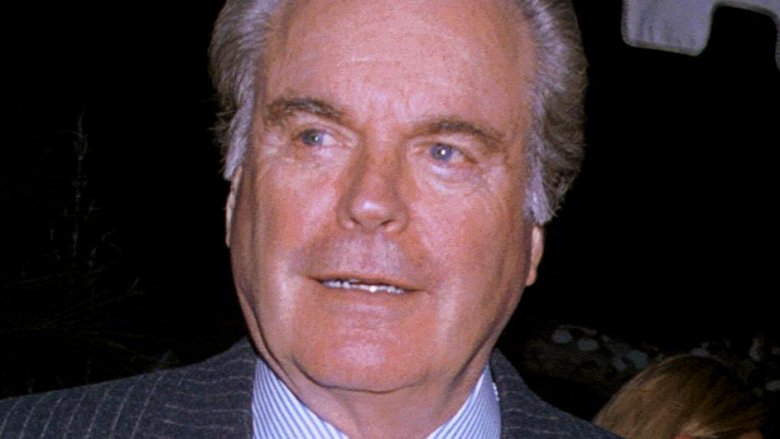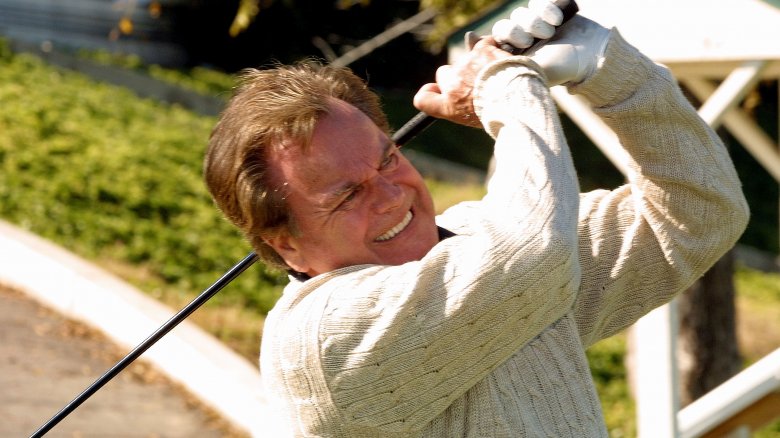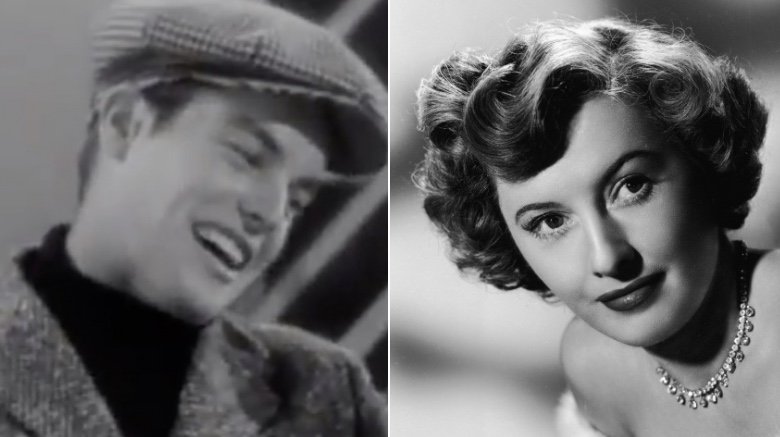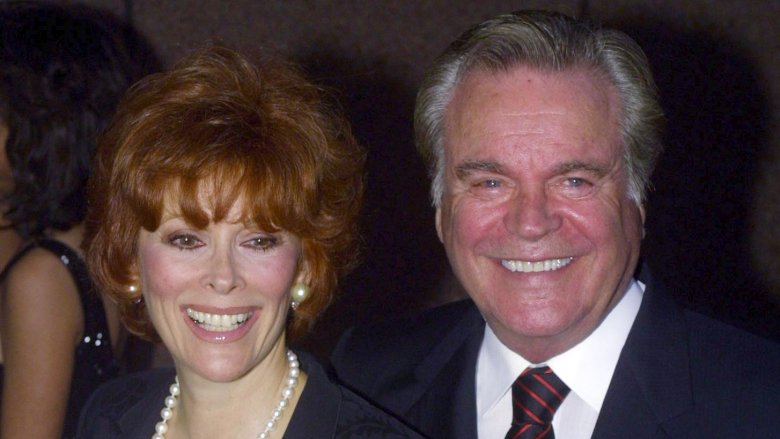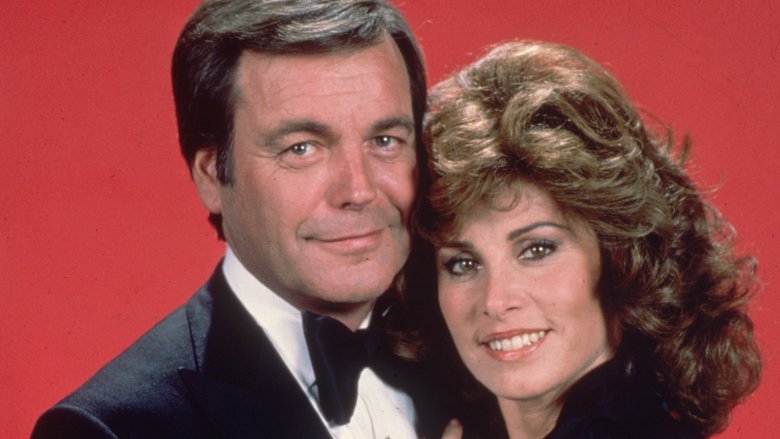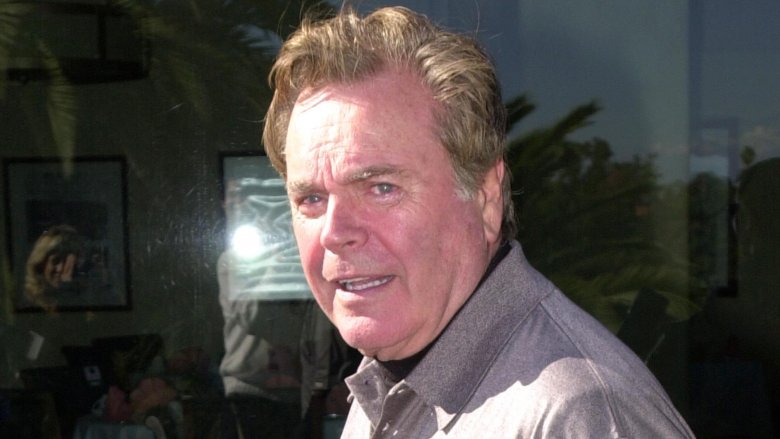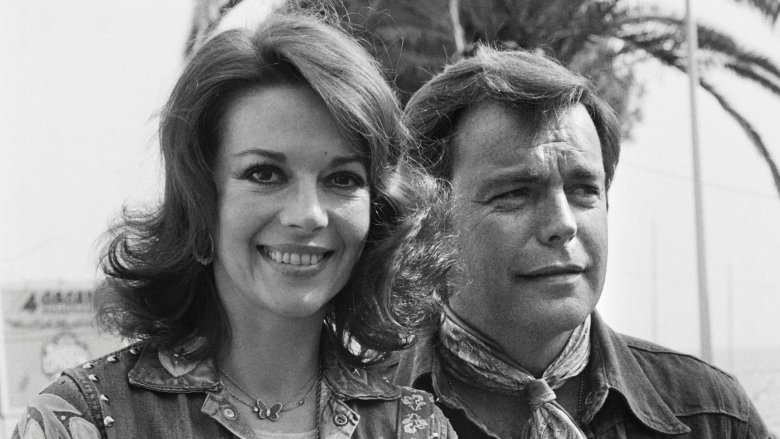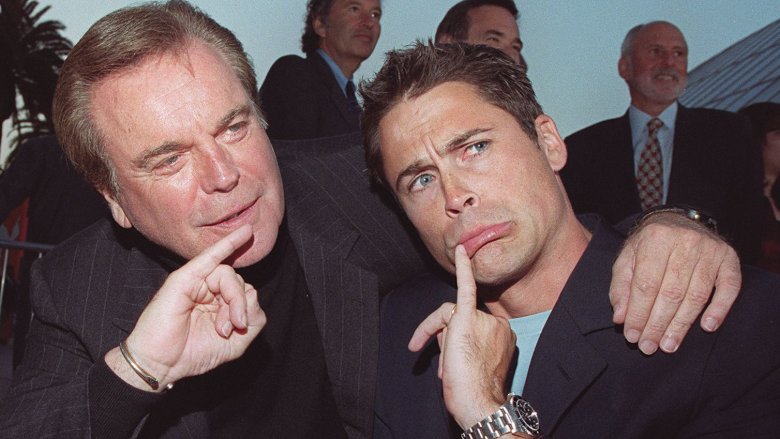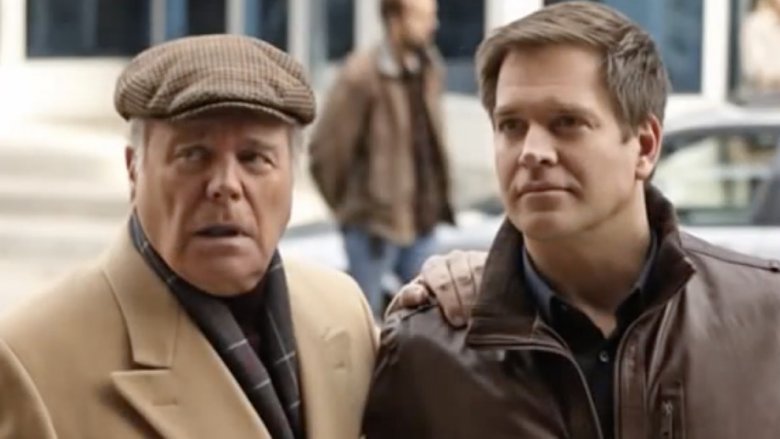The Untold Truth Of Robert Wagner
It seems like Robert Wagner has always been in the movies or on TV, or gently mocking his own persona on the big and small screens. Long before he costarred in three Austin Powers films as the villainous, eye-patched second-in-command to Dr. Evil (accurately and immaturely named "Number Two"), he was the debonair Jonathan Hart, one half of a happily married, mystery-solving duo (alongside Stefanie Powers) on the comfortingly cheesy TV drama Hart to Hart, which aired from 1979 to 1984. And decades before that, he was the handsome and charming star of dozens of big movies from the early 1950s onward, including The Pink Panther, The Longest Day, and Prince Valiant.
But he's probably even more famous for his off-screen life, which includes two separate marriages to screen icon Natalie Wood ... who drowned one night in 1981 when Wagner was nearby. Here's a look into the fascinating and and curious life of Robert Wagner.
When he was green, he took to the greens
Robert Wagner can play rich — or rich-looking — dudes well because he himself came from money. According to his memoir Pieces of My Heart, his father was a self-made man, working as a paint salesman for accounts like the Ford Motor Company in Detroit and flipping houses in upscale neighborhoods.
At the age of seven, the younger Wagner was sent to boarding school in Los Angeles, and, soon after, his family joined him, building a house in the Bel-Air neighborhood. Since his father was a member of the Bel-Air Country Club, the increasingly movie-obsessed Robert Wagner was able to find work there as a caddy. He was young at the time, but America's entry in World War II severely depleted the B.A.C.C. workforce. Working around actors made Wagner really want to be an actor, as he ran into stars like Fred Astaire and even caddied for Clark Gable. Though the standard caddy tipping rate back then was $1, "Clark Gable always gave you a little extra," Wagner revealed in his book.
An early romance of Titanic proportions
One of Robert Wagner's first major roles came in the hit big-screen melodrama Titanic. No, not the one from 1997 — another film called Titanic hit theaters in 1953, and it earned two Oscar nominations. In his book I Loved Her in the Movies, Wagner wrote about the "relationship that developed" on the set between him and his much older and much more established co-star, Barbara Stanwyck.
Things got really hot and heavy after filming wrapped. In Pieces of My Heart (via Barbara Stanwyck: The Miracle Woman), Wagner wrote that he drove Stanwyck home from a party, and, when he walked her to the door, she gave him "a magical look of interest ... and appreciation ... and desire." He left the next morning, and the duo secretly dated for four years. According to Barbara Stanwyck: The Miracle Woman by Dan Callahan, it was Stanwyck who put the kibosh on the relationship, feeling that "it couldn't really go anywhere" because of their huge age difference (Stanwyck was 23 years older).
Later, when Stanwyck was dying in a hospital, Wagner tried to get in to see her, but she sent him away, preferring that he remember her when she was young and beautiful. She later died in January 1990 while wearing a four-leaf clover necklace that Wagner had given her during their affair.
He's definitely the marrying kind
Robert Wagner has been one of the most famously handsome guys in the romantically fickle world that is Hollywood for more than 60 years. In other words, he's got a few marriages under his belt, and he's got a long and complicated romantic history.
Wagner asked Natalie Wood out on a date in 1956. Eight years younger than Wagner, she was also far more famous and accomplished than he was, having been the star of the Christmas classic Miracle on 34th Street as a child and having earned an Oscar nomination for her work in 1955's Rebel Without a Cause. In December 1957, they were married ... and, by 1962, they were divorced. Wagner rebounded quickly and married actress Marion Marshall in 1963. This second marriage lasted a bit longer than his first — eight years — but, after he divorced Marshall, Wagner found himself drawn back to Wood, and the two remarried in 1972.
Wood died in 1981 (more on that later), and, within a year, Wagner found solace and new love in the arms of his childhood friend, Jill St. John (via People). She became the third (or technically, fourth), Mrs. Robert Wagner in 1990, as reported by People.
Straight to the Hart
Despite Robert Wagner's life-long magnetic attraction to Natalie Wood, the man had his limits. He liked living with her and loving her, but he didn't want to work with her. He actually actively discouraged the possibility.
ABC sent frequent Wagner collaborator, writer and director Tom Mankiewicz, to sell the actor on the idea of doing Hart to Hart with both him and Wood. "Let me tell you something. I sell soap. My wife sells tickets. But if you put me on one network and you put her up against me, I'll kill her in the ratings," Wagner said, according to Mankiewicz in his memoir, My Life as a Mankiewicz. Wagner meant that he was a commercial television actor at his core, and his wife was a movie star. "Let's get a costar and let Natalie sell tickets. Let her do what she wants," Wagner reportedly said. And that's how Stefanie Powers got cast on Hart to Hart and Wagner shut his wife out of a job.
Perhaps his unwillingness to turn his romantic partner into his screen partner goes back to 1960, when Wagner and Wood starred in a movie called All the Fine Young Cannibals. Today it's best known for inspiring the name of an '80s band because it totally flopped.
The many flops of Robert Wagner
Wagner is probably best known as a TV actor, what with his long stint on Hart to Hart. As part of a glamorous married couple who decide that solving mysteries would be fun, Wagner played Jonathan Hart for five seasons from 1979 to 1984 and then again in a bunch of made-for-TV movies. That show was just about the only long-term success Wagner enjoyed on the small screen — though he also starred in quite a few other shows before and after the popular series.
From 1968 to 1970, Wagner starred on It Takes a Thief, playing the world's smartest criminal who works for the government in exchange for his freedom. In 1972, Wagner took a job in England on the BBC's brief Colditz, a drama set in a World War II military prison camp. In 1985, just a year after Hart to Hart ended, Wagner found another TV gig in Lime Street. He played a wealthy guy who investigates shady insurance claims. One of his character's daughters was portrayed by Samantha Smith, a girl who had become a celebrity in 1982 when she wrote a letter to Soviet Union leader Yuri Andropov expressing her anxieties about the Cold War and nuclear bombs. Sadly, Smith died in a plane crash in 1985 at age 13, which likely led to the swift cancelation of Lime Street.
Does he know who killed Natalie Wood?
Unfortunately, Robert Wagner isn't just known for his TV work — he's also known for his connection to the death of his wife Natalie Wood.
Wagner, Wood, and, of all people, Christopher Walken were having a little party on Wagner's boat (the Splendor) in November 1981. Then Wood was gone, and her body was soon found. Just what went down that night? According to Dennis Davern, captain of the Splendor, Wagner and Wood had a nasty fight shortly before she disappeared. Other witnesses claimed the fight started when Wagner got mad at Wood for flirting with Walken. Her death was initially ruled an accidental drowning, with evidence suggesting that Wood had unsuccessfully attempted to sail a dinghy to land (via CNN).
In 2012, the Los Angeles County coroner's office took another look at the case, as reported by CNN, and changed Wood's cause of death to "drowning and other undetermined factors" after they received new information. Six years later, the L.A. County Sheriff named Robert Wagner a "person of interest" in Wood's death. "We know now that he was the last person to be with Natalie before she disappeared," Lt. John Corina told 48 Hours (via The Hollywood Reporter).
"I haven't seen him tell the details that match all the other witnesses in this case," Corina said. "I think he's constantly changed his story a little bit. And his version of events just don't add up."
Rob Lowe is his Mini-Me
The second Austin Powers movie, The Spy Who Shagged Me, takes place back in the shagadelic spy's prime of the swingin' 60s, which meant that some of the older characters from the first film would have to be recast with young actors. Filmmakers selected Rob Lowe to play Young Number Two, the younger version of Robert Wagner's character.
Lowe turned out a remarkable performance, uncannily nailing both the iconic actor's voice and physical mannerisms. And he came to the film's set totally prepared, as Lowe had known Wagner for some time before joining the Austin Powers franchise. As a young, lascivious Brat Packer about town in the 1980s, he spent a lot of time at Wagner's house, getting to know the older actor's daughters. "Whenever RJ introduces me to anyone, he says, 'Do you know Rob? He spent an awful lot of time sniffing around my daughters,"' Lowe told Entertainment Weekly in 1999.
NCIS: Awkward Situation
As an aging actor past his prime but still wishing to work, Robert Wagner does what he has to do, and has been party to the old Hollywood stunt of casting well-known actors as the parents of characters on popular TV shows. From 2010 to 2018, Wagner popped up on a dozen episodes of CBS's indestructible and perennially popular crime drama NCIS. He plays Anthony DiNozzo Sr., father of Anthony DiNozzo, an agent portrayed by Michael Weatherly. They bear a resemblance to one another, and Weatherly shares Wagner's easy swagger.
Another casting agent also thought that Weatherly looked like Wagner, because the actor actually played Robert Wagner in a made-for-TV movie. In 2004, Weatherly starred in The Mystery of Natalie Wood, which explored the strange circumstances of the actress' 1981 death. That had to have made for some uncomfortable behind-the-scenes chats between Wagner and Weatherly on the set of NCIS.

